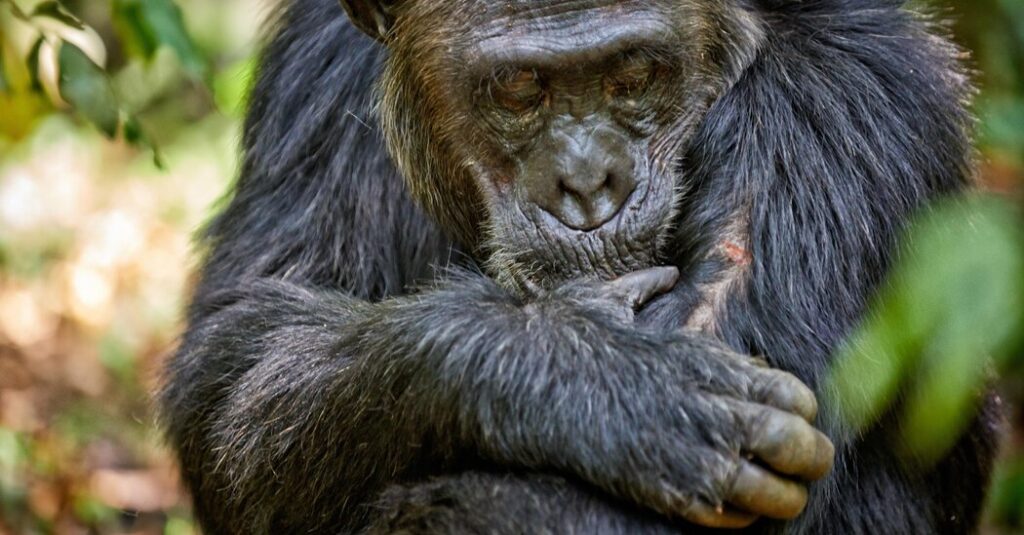Watching wild baboons in Kenya, Akiko Matsumoto-Oda, an evolutionary biologist and primatologist at the University of the Ryukyus in Japan, had a front-row seat to the violence between these monkeys, especially the males.
“I was struck by how frequently they sustained injuries,” she said, “and, even more, by how rapidly they recovered — even from seemingly severe wounds.”
Compared with her own experiences with nicks and cuts, the baboons’ ability to heal seemed like a superpower.
In a study published on Wednesday in Proceedings of the Royal Society B, Dr. Matsumoto-Oda and her colleagues compared the healing rates of humans, chimpanzees, monkeys and mice. They found that human wounds took more than twice as long to heal as wounds of any of the other mammals. Our slow healing may be a result of an evolutionary trade-off we made long ago, when we shed fur in favor of naked, sweaty skin that keeps us cool.
When possible, the researchers wanted to study healing in a way that was less violent and more controlled than watching wild baboons.
To measure human healing, they recruited 24 patients who were having skin tumors removed at the University of the Ryukyus Hospital. To gather data on chimpanzees, which are some of our closest animal relatives, researchers observed five captive chimps at the Kumamoto Sanctuary of the Kyoto University Wildlife Research Center, which houses animals formerly used in pharmaceutical research. The chimps’ wounds, like those of wild baboons, mostly came from tiffs between the animals.
The study’s other primate subjects, all kept at the Kenya Institute of Primate Research, included olive baboons, Sykes’ monkeys and vervet monkeys. Researchers anesthetized the monkeys, surgically wounded them and then monitored their recovery. “As a field researcher, I personally believe that invasive studies should be minimized as much as possible,” said Dr. Matsumoto-Oda, who noted that bite wounds on wild baboons are often similar in size to the surgical wounds in the study, but deeper.
Finally, to compare humans and primates with more distantly related mammals, researchers anesthetized and surgically wounded mice and rats.
Based on her field observations, Dr. Matsumoto-Oda was prepared to see humans healing more slowly than the other animals. The 24 people regrew skin at about a quarter of a millimeter per day, on average.
What surprised Dr. Matsumoto-Oda more was the consistency between the healing rates of the animal subjects, including chimpanzees. There was no significant difference in the speedy skin regrowth among different primates, which grew about 0.62 millimeters of new skin per day, or between primates and rodents. Humans were the clear outliers.
Elaine Fuchs, a stem cell biologist at the Rockefeller University who studies skin growth and repair and was not involved in the new research, said the results were what she would have expected. That’s because skin healing depends on hair.
Each hair grows from a hair follicle, which also houses stem cells. Normally, those stem cells just make more hair. But when called upon, they can grow new skin instead. “When the epidermis is wounded, as in most kinds of scratches and scrapes, it’s really the hair-follicle stem cells that do the repair,” Dr. Fuchs said.
Furry animals are covered in follicles, which help quickly close up wounds in mice or monkeys. By comparison, “human skin has very puny hair follicles,” Dr. Fuchs said. And our ancestors lost many of those follicles, packing their skin with sweat glands instead. Sweat glands also have stem cells, but they’re much less efficient at repairing wounds, Dr. Fuchs said.
Why did we make that trade during evolution, giving up so much of our hair and its protective properties? The glands that make the watery, salty sweat that dampens our shirts on a hot day are called eccrine glands. Most furry mammals have them only in certain places, mainly the soles of their paws. But human ancestors went all-in on sweat — modern humans have millions of sweat glands all over our bodies, and they’re about 10 times denser than those of chimpanzees.
“We evolved to cool by sweating profusely,” said Daniel Lieberman, an evolutionary biologist at Harvard University. Our abundant sweat glands and lack of fur let our ancestors engage in physical activity in hot environments, Dr. Lieberman said, and cooled the machinery of our big brains.
The benefits of trading hair for sweat must have outweighed the costs. Dr. Matsumoto-Oda and her co-authors speculate that social support among prehistoric humans might have helped wounded people stay alive, despite our slower healing. (Or maybe they had ways to treat wounds, like orangutans and chimps seem to.)
“The evolutionary disadvantage is that wound healing is slowed,” Dr. Fuchs said, but humans also gained evolutionary advantages by losing hair.
“They can put on a coat if they need to,” she added.

